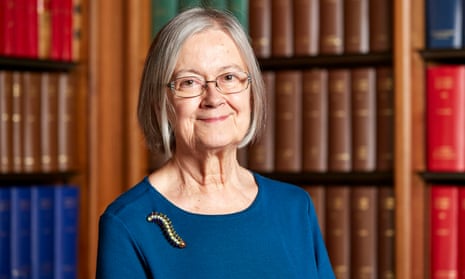Brenda Hale is set to make history by becoming the first female president of the supreme court, according to reports.
Lady Hale is expected to be confirmed in the role in an announcement by Downing Street on Friday, according to the Times.
Three other supreme court posts are set to be announced at the same time, one of them a woman, taking the female tally among the 12 supreme court justices to two. The list is thought to include Lords Justice Lloyd Jones and Briggs, and Lady Justice Black.
Hale, a longstanding champion of diversity in the judiciary – who joined the supreme court in 2009, has said on the matter: “Excellence is important but so is diversity of expertise.”
In 2015, the family law expert said the supreme court should be ashamed if it does not radically improve its diversity.
She previously criticised the inbuilt bias in choosing judges, and the dependence on “soundings” from judges, which produced a judiciary that is “not only mainly male, overwhelmingly white, but also largely the product of a limited range of educational institutions and social backgrounds”.
Last year she said that, as the judiciary became more diverse, it would mean the loss of “boring old farts” who all thought the same, which meant judicial rulings would become less predictable – although that was not a good thing for legal certainty.
Hale, who will earn £225,000 a year as the head of the UK’s highest court, is among the last of the judges who can serve to 75 as she became a judge before rules were changed in 1995 to make retiring at 70 mandatory.
Born in Yorkshire in 1945, she went to a state school, Richmond high school for girls, and then to Girton College, Cambridge, where she read law and graduated top of her class.
Her legal career began in academia when she joined the University of Manchester law faculty as a junior lecturer. While teaching – and working in a pub – she studied for the bar exams, winning the top results for her year in the bar finals. She was also the first woman and youngest person to be appointed to the Law Commission.
In 1989, she was appointed Queen’s counsel and in 1994 she became a high court judge, the first to have made her career as an academic and public servant rather than as a practising barrister.
In 1999, she became the second woman to be appointed to the court of appeal; Dame Elizabeth Butler-Sloss being the first. Hale also became the first female law lord. In June 2013 she was appointed deputy president of the supreme court.









